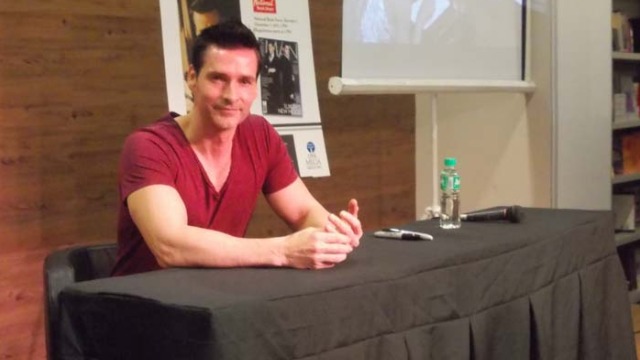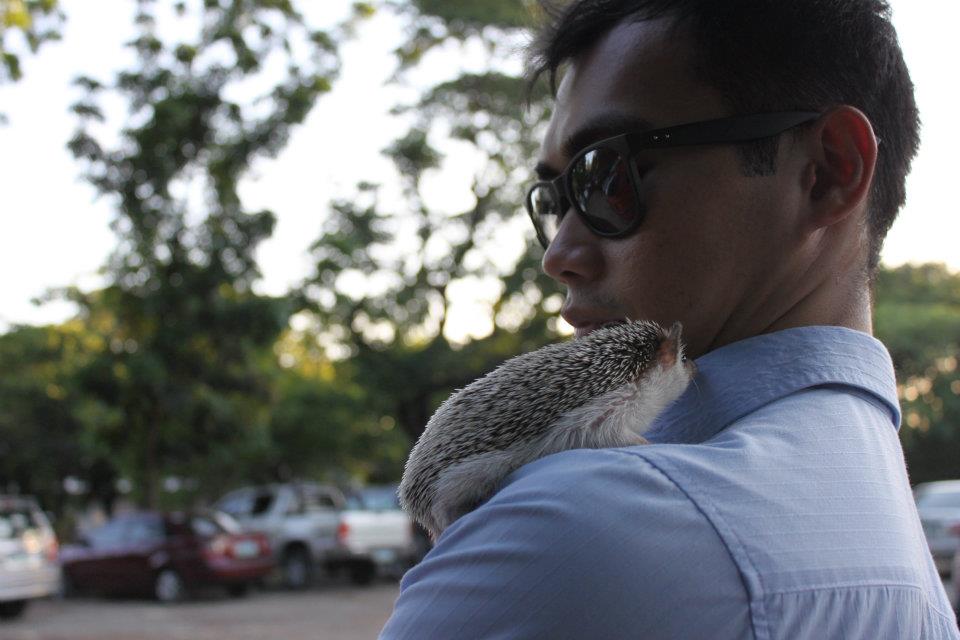SUMMARY
This is AI generated summarization, which may have errors. For context, always refer to the full article.

MANILA, Philippines – For a little over a decade now, Canadian-born fashion photographer Todd Anthony Tyler has traveled to some of the world’s most exotic destinations shooting images that have graced the pages of GQ, Vogue China, and Elle China, just to name a few. He has done numerous campaigns for global beauty and fashion brands, and helped develop the careers of several models as well.
But for the erstwhile model, his journey from in front to behind the camera was never an easy feat. “It took quite awhile to get respected as a photographer because in the beginning, people just thought of me as this model who wanted to be a photographer.” Not now, of course.
Mainstream audiences recently got introduced to the Shanghai-based photographer when he was cast as the photographer judge for “Asia’s Next Top Model.” Tyler was recently in Manila to meet his local fans and sign copies of Mega Magazine, whose December issue currently includes a fashion spread modeled by him. He spoke to Rapper about balancing his artistic and business side, his advice to young photographers, and why his reality show gig left a little bit more to be desired.
Everyone knows you as this fashion photographer, but do you do more commercial projects now than editorial shoots?
Interestingly, it becomes more commercial, but I think it becomes that because of the nature of the business itself: commercial projects pay more. You start to be more involved in that due to the fact that in the end, you are running a business. And for your business to be successful you need to have good numbers. For me as a photographer, of course, I would love to shoot some high fashion editorials every day. That would be amazing.
How do you balance your artistic point of view as a photographer versus the often uninspired requirements of a corporate client?
At the beginning of my career, I did sort of struggle with balancing that because I really came to photography as an artist and art director. I had ideas and concepts that I wanted to create. But I quickly learned that in the business of photography, clients are hiring you to execute and create the idea that they need. And they’re not really bringing you in to show them something new.
How do you keep your creative juices flowing, then?
The way I balance it now is that I just have the core business that sustains me, and then personal work. I’ve known fashion editors and magazines for a fair amount of time, and they do give me some creative freedom. Those are my outlets.
I’m pretty sure people approach you asking for advice on how to be better photographers asking all technical stuff. But from your perspective, what are the things you wish you already knew when you began?
Maybe you have a little extra talent above the people who just like taking photos. But that little bit of extra is only truly the starting point. From there you have to market and organize yourself as a product and as a business. You have to see yourself as a brand. Maybe it would’ve been better for me to understand that a little bit more at the beginning.
Was it that difficult?
Most clients are hiring you because they heard or know you’re a good photographer. But they may not be necessarily hiring you because of a particular strength or style. For my work, I tend to use movement and dark shadows. But it doesn’t necessarily mean that the client is hiring me because they want dark shadows. I think young photographers really need to know these two things: be a bit of an entrepreneur and build a business, and two, to listen to your clients and execute the brief that they want.
Who are the photographers that you look up to?
At the beginning of my career, Terry Richardson was one that I did look at a fair amount–not necessarily because of the gratuitous nature of his photography. He draws something interesting from the person he’s photographing every time. There’s that whole story to his image; it’s not flat. I also like Patrick Demarchelier for his commercial style because his is more clean and simple and lends towards beauty. I also like David LaChapelle, Helmut Newton.
We have to talk about your stint as a judge on the panel of Asia’s Next Top Model. How was the experience for you?
Some things I’m probably going to keep for a bio some day.
That bad?
It was an excellent experience. But when I first got involved, I did have some second thoughts because –especially in the west – there tends to be a separation between fashion entertainment, and the actual fashion industry. Sometimes you can get ostracized from the real fashion world because you sold out to the fashion entertainment industry. I was really a bit worried about that because I was building a career as a respected fashion photographer. I didn’t want to trash it by doing a reality TV show. But everyone that I asked said that people would at least get to know me and my work better. So I took it as that opportunity. And in that sense it was very good for me.
Were you happy with the outcome?
I was a touch disappointed because I approached the show as I truly wanted to find Asia’s next top model. In my career, I was involved in developing real top models. I was a little disappointed that they didn’t let me work the way that I had hoped because the show tended to come out as fashion entertainment. There’s so much to show about Asia. I hoped that I could come on board, make it a little more than reality, and that we could find a top girl, develop her, and truly make a new top model. And it didn’t really meet my expectations.
Last question, and probably the most important: what camera do you use?
When I was shooting film, I was using Mamiya. Then came a period of time I had to switch to digital, and at that time Canon was the only one that had the full frame sensor so I went with Canon. Also, in my work, I tend to shoot a lot of action and at that time, they had very fast focusing. And once you enter into a system and buy all the lenses and get very used to the functions, you kind of stick with it. On occasion I sometimes use Hasselblad because we sometimes need a medium format especially if we’re doing billboards. And I’ve been shooting a little bit with the new Leica medium format.
– Rappler.com

Peter ImbongPeter Imbong is a fulltime freelance writer, sometimes a stylist; and on some strange nights, a host. After starting his career in a business magazine, he now writes about lifestyle, entertainment, fashion, and profiles of different personalities. Check out his blog,Peter Tries to Write.
Add a comment
How does this make you feel?
There are no comments yet. Add your comment to start the conversation.